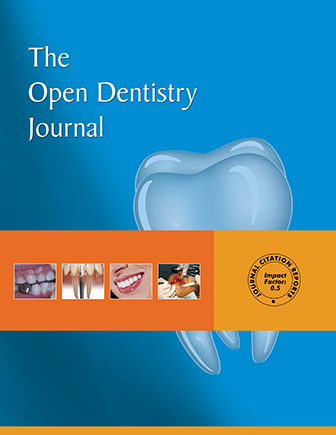All published articles of this journal are available on ScienceDirect.
Effect of 0.2% Chitosan Associated with Different Final Irrigant Protocols on the Fiber Post Bond Strength to Root Canal Dentin of Bovine Teeth: An In-vitro Study
Abstract
Objective:
This in-vitro study investigated the effect of 0.2% Chitosan associated with different final irrigant protocols on the bond strength of fiber posts (FP) to root canal dentin.
Methods:
Fifty bovine incisors roots were prepared using the ProTaper Universal system, irrigated with 2.5% sodium hypochlorite, and divided into one control group (n=10) with no final irrigant protocol and four experimental groups (n=10), which were defined according to the combination of chelating solution (17% EDTA and 0.2% Chitosan) and irrigant activation/delivery method [conventional irrigation (CI), and passive ultrasonic irrigation (PUI)]. Post spaces were prepared to a depth of 12 mm using #1-5 Largo drills, and the FP were cemented using self-adhesive resin cement. Two slices of 2 mm in thickness from each third were obtained and submitted to the micropush-out test. After testing the push-out strength, the slices were analyzed under a stereomicroscope at 40× magnification for bond failure patterns determination. Statistical analysis was performed using three-way ANOVA followed by Tukey’s test (α = 0.05).
Results:
The control and 17% EDTA + CI groups exhibited significantly lower bond strength than 0.2% Chitosan + CI, 17% EDTA + PUI, and 0.2% Chitosan + PUI groups in the cervical third (P = 0.00). The cervical third had higher values than the middle and apical thirds in control (P = 0.00), 17% EDTA + PUI (P = 0.00), and 0.2% Chitosan + PUI groups (P = 0.00). Adhesive cement-dentin failure type was predominant in all groups.
Conclusion:
The use of 0.2% chitosan did not affect the bond strength of FP to root dentin. Passive ultrasonic activation of chelating solutions resulted in an improvement in bonding strength.


